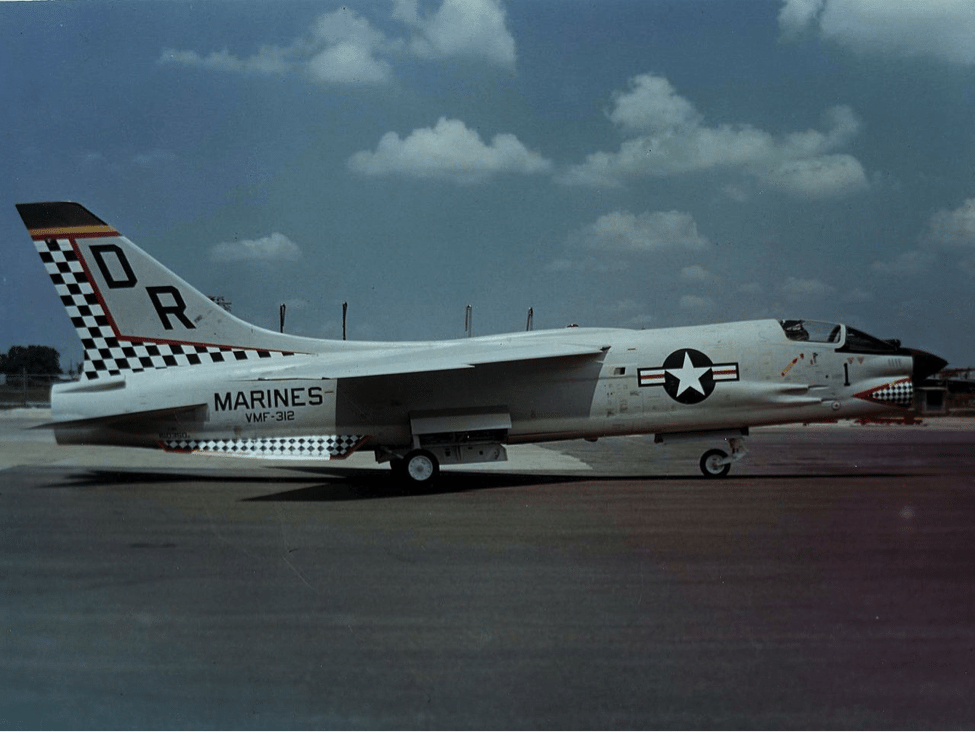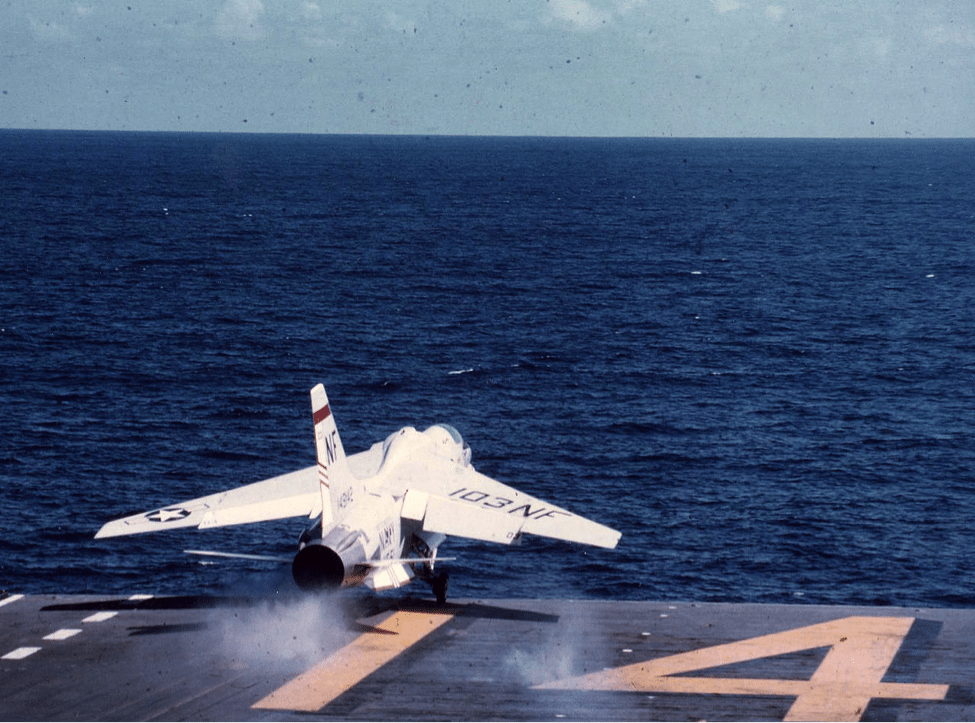When You’re Out of F-8s, You’re Out of Fighters!
On 25 March 1955 test pilot John Konrad lifted off for the first time (and went supersonic) in the prototype Vought F8U Crusader. Over the next 32 years in United States service (and an additional 13 years with the French), the “Last of the Gunfighters” would set speed records, shoot down MiGs using guns and missiles in Vietnam, provide critical photographic proof of Soviet missiles in Cuba, take off, fly, and land in one piece with its wings folded (on more than one occasion), control drones, perform an aerial toilet paper wrap job on at least one pesky Russian trawler, and become an almost mythical aircraft universally loved by all who flew it.

Lofty Goals
In September of 1952, the United States Navy Bureau of Aeronautics (BuAer) generated a requirement for a new single-seat, jet-propelled, carrier-based fighter. The new jet was to be capable of Mach 1.2 speeds at 30,000 feet, climb rates of 25,000 feet per minute, landing speeds below 100 miles per hour, and was to be armed with four 20 millimeter cannon.

A Strong Start
BuAer ordered three Vought XF8U-1 prototypes in June of 1953. After the first prototype flew on the 25 March 1955, Vought’s development of the Crusader went so smoothly that the second prototype and the first production F8U-1 both flew on the same day- 30 September 1955. Carrier qualifications were conducted aboard the USS Forrestal (CVA-59) in April of 1956. Next the Crusader prototypes were evaluated by Air Test and Evaluation Squadron 3 (VX-3) at the Naval Air Weapons Station at China Lake in California.

Unmatched Performance
On 21 August 1956 a prototype Crusader flown by Navy Commander Robert W. Windsor set a new level flight speed record of 1,015.428 miles per hour. On 6 June 1957, a VX-3 Crusader was launched from the carrier USS Bon Homme Richard (CVA-31) off the west coast. After a flight covering 2,200 miles the aircraft trapped aboard the USS Saratoga (CVA-60) off the east coast. Flight time was a record-breaking three hours and 28 minutes.

Faster Than a Speeding Astronaut
Marine Corps Major John H. Glenn completed the first supersonic transcontinental flight while flying a photo-reconnaissance F8U-1P on 16 July 1957. Glenn’s record flight, dubbed Project Bullet, took him from Naval Air Station Los Alamitos in California to Floyd Bennett Field just south of Manhattan in New York City in only three hours, 23 minutes, and 8 seconds.

The “teeth” of the Crusader were the four fuselage-mounted 20 millimeter cannon as per the BuAer requirement. A retractable tray mounting up to 32 unguided Mighty Mouse folding fin aerial rockets (FFARs) was located in the bottom of the fuselage of F8U-1s but was sealed on subsequent variants. Also eventually present were fuselage-mounted pylons capable of mounting two, and later four, AIM-9 Sidewinder heat-seeking air-to-air missiles. Later variants of the Crusader would add two wing-mounted weapons pylons.

Things That Go Boom
Crusaders were powered by an afterburning Pratt & Whitney J57 turbojet engine. The afterburner had two speeds- off or on. The on setting gave the pilot full afterburner and off…well, you get the idea. Unlike later designs, there were no zones or graduated afterburner power settings. It was all or nothing- and often a barely controlled explosion of thrust (and unwarned bystanders hitting the deck) when the burner was lit off. But when lightly loaded, the Crusader possessed nearly a 1 to 1 thrust to weight ratio.

Wings of Gold
A unique aspect of the Crusader design was its variable-incidence wing. The wing was basically hinged at the rear attachment point and the leading edge could be hydraulically raised up to 7 degrees. The raised leading edge increased the angle of attack for the wing without reducing forward visibility. The wing was also equipped with maneuvering slats and dog-tooth notches at the wing fold joints. Coupled with the all-moving horizontal tail surfaces, these design innovations enabled the Crusader to maneuver effectively over a wider range of speeds.


[…] consisted of VF-14 Tophatters flying the McDonnell F3H Demon, VF-11 Red Rippers flying the Vought F-8E Crusader, VA-172 Blue Bolts and VA-12 Flying Ubangis both both equipped with the Douglas A-4C Skyhawk, […]
[…] Vought produced this retrospective film about their F8U-1 and F8U-2 Crusader fighter the days of the Last Gunfighter serving in frontline fleet squadrons were numbered. Their other […]